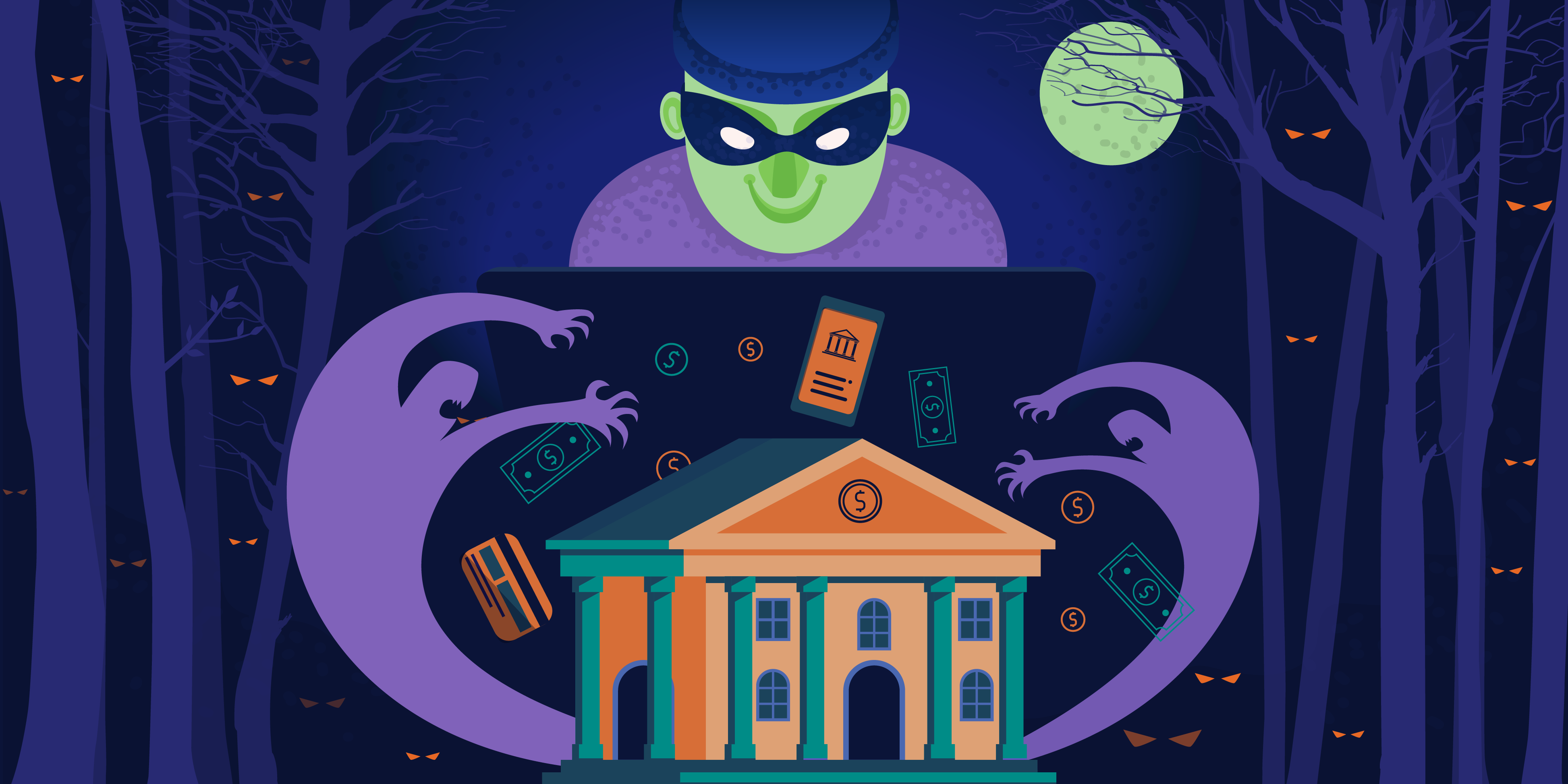
Halloween might be the time of year when it’s fun to give your friends and neighbors a good scare. But while ghosts, ghouls, and goblins run rampant for one night a year, fraudsters and financial criminals use tricks all year long to treat themselves to other people's fortunes. It’s truly frightening to think about.
In the spirit of the spookiest season, we asked some of our leading experts, “What makes fraud, AML, and AI so scary? What would make it less scary?” Read on to learn how they address some of your biggest fraud and financial crime fears – and how to make them less scary.
“What do AI, fraud, and AML and cheesy horror fights like Freddy Krueger versus Jason Voorhees have in common? Beyond being scary, they are all connected, and one is the solution to the other two. In other words, AI is scary enough to deal with fraud and AML. It’s the light at the end of the tunnel that allows FIs to fight and monitor bad actors’ efforts in real-time. That’s very scary for bad actors because, in milliseconds, it can understand how fast money travels and if any transfers from an offshore account are structuring some dollars to send to an investment account in a shady country. So what’s scarier? Fraud and AML? Or AI fighting both? Grab your popcorn and watch!”
Joel Carvalhais, Risk Strategy Analyst Senior Manager
“The scary thing about AI is that, just like any technology, it has its downsides. Too much trust in it can be dangerous, and the beneficial aspects, like recommending a news article or a product that you might like, can, at a global scale, have unintended consequences such as creating echo chambers, polarization, hindering innovation, or creating monopolies.
I believe two things that would help make this better. First, educate people, starting in schools, on what AI is and where it’s used. Second, empower and incentivize companies to have Ethical AI practices. And to design AI systems that mitigate the side effects produced by first-generation AIs, making them more explainable, limiting embedded bias, and improving diversity in recommendations.”
Jaime Ferreira, VP of Data Science
“What makes AML so scary is it is always subject to new and upcoming regulations that are always changing. It can be frightening for companies to keep up with these regulations. The ever-evolving geopolitical landscape has demonstrated a continuing need for robust technology and controls to respond to the evolving money laundering activities around the world. The need for decreased cost and increased efficiencies among these technologies keeps risk and compliance managers up at night. The system maintenance and data preparation tasks are frightening challenges for companies to install AI and machine learning models. Meanwhile, AML tools should be managed with care as these models are complex, need to be governed, validated, and controlled. Issues with the data can produce unintended consequences or poor decisions generated by the system – which is also very scary.
Overall, the jump into AML is a daunting task and needs to be managed with care. But in the end, when implemented correctly and with the right focus, a company can be armed with a strong defense mechanism to fight money laundering and financial crime.”
Chris Le, Senior Director of Account Management
“The fear of the unknown always causes a good scare in horror movies. There’s nothing quite as terrifying as watching someone in a haunted house hesitantly reach for a door and wondering what kind of ghost, deranged lunatic, or deadly creature run amok is waiting for them on the other side.
Outside of movies, the unknown is too often a key theme in financial services. And that’s what really scares me. The thought of not knowing why a machine-led algorithm decided to decline a card transaction or block a much-needed money transfer keeps me up at night more than things that go bump in the night. These opaque outcomes can have real consequences on our financial livelihoods. Anyone who has been directly affected by a machine’s final but unknown decision understands how horrifying it can be to fix something that’s impossible to understand.
Fortunately, bank customers don’t have to fear the unknown the same way horror movie characters do. Responsible AI and solutions that enable transparency and explainability can offset the risk of customers falling victim to unknown outcomes. With a greater understanding of how decisions are reached, the unknown becomes, well, known – and much less scary.”
Andy Renshaw, SVP of Product Strategy and Management
How well do you understand authorized push payment fraud? Download our infographic to 15 Things to Know About APP Fraud to learn how to fight APP fraud more effectively.
Share this article:
Sanjay Salomon
Sanjay Salomon is an experienced journalist who has written for WGBH, US News & World Report, and Boston.com. He was a member of The Boston Globe’s Pulitzer Prize-winning team for Breaking News for coverage of the Boston Marathon bombing. Later, he became the Senior Writer at PYMNTS, extensively writing about digital fraud, banking, AML/KYC, cross-border commerce, and numerous other payment-related topics. As a Feedzaian, Sanjay loves storytelling and helping banks and financial institutions keep their customers safe from fraud and scams. He lives in New England with his wife and their two cats.
Related Posts
0 Comments6 Minutes
A Guide to Secure, Seamless User Authentication in Payments
Online payments demand a delicate balance between security and user experience. Consumers…
0 Comments7 Minutes
Combating Emerging Scams in the Philippines
The Philippines is witnessing remarkable growth in digital banking. Unfortunately, a…
0 Comments5 Minutes
Feedzai is a Leader in the 2024 IDC MarketScape for Enterprise Fraud Solutions
Exciting news! Feedzai, the world’s first RiskOps platform, is proud to have been named a…

